Artist based in Los Angeles, CA

Shingo Yamazaki, Portrait of the artist
Tell us about yourself, what's your background?
I am a second generation Japanese/Korean American, born and raised in Honolulu, Hawaiʻi. Growing up in Hawaiʻi provided a unique and diverse community, where I was able to learn, embrace, and live within multiple cultural identities. Being surrounded by lush tropical landscape and learning to respect and preserve nature, has also shaped my views and perspective of our relationship to our surroundings. From an early age, I was always seeking opportunities to be creatively involved, whether it be making dioramas, or drawing my own story books. My artwork during high school consisted mostly of sketches in notebooks that I did not think of in a serious capacity. When I entered college, I took several art courses as electives, and that really opened me up to an entirely new way of thinking, and I started to take things more seriously. I moved to Los Angeles 4 years ago, which gave me a lot of exposure to the current art scene that was not accessible in Hawaiʻi.
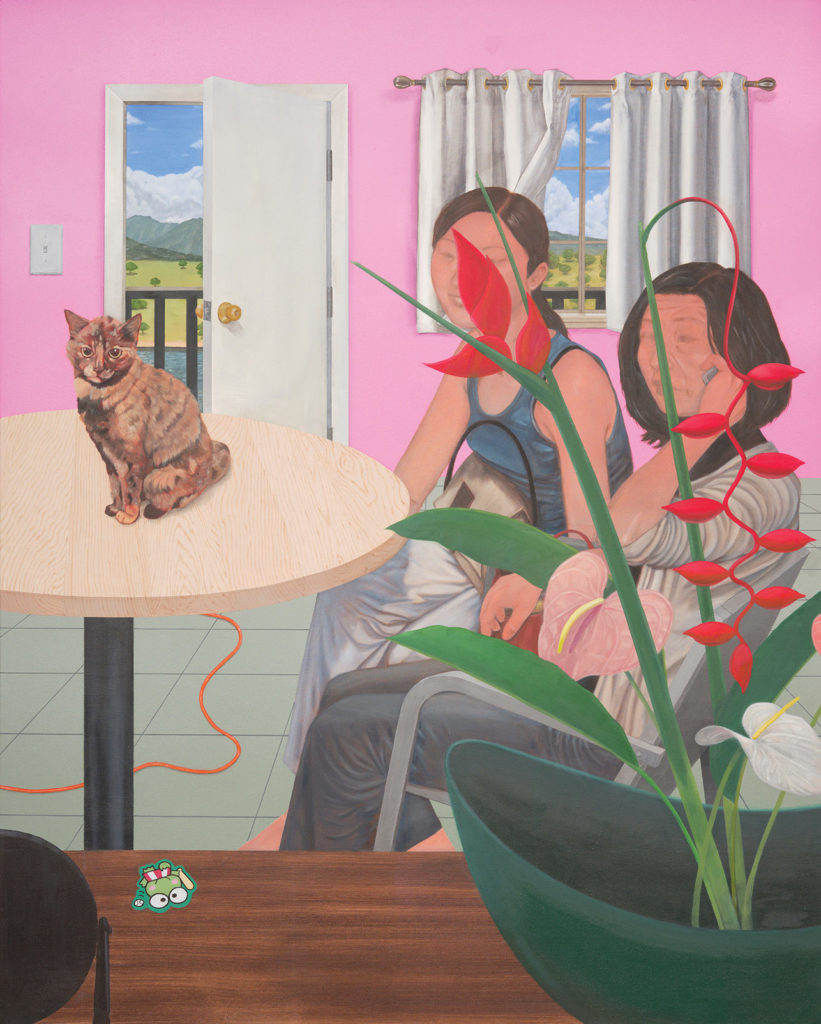
For Lack of Better Words, 2022, oil and acrylic on canvas, 60" x 48"
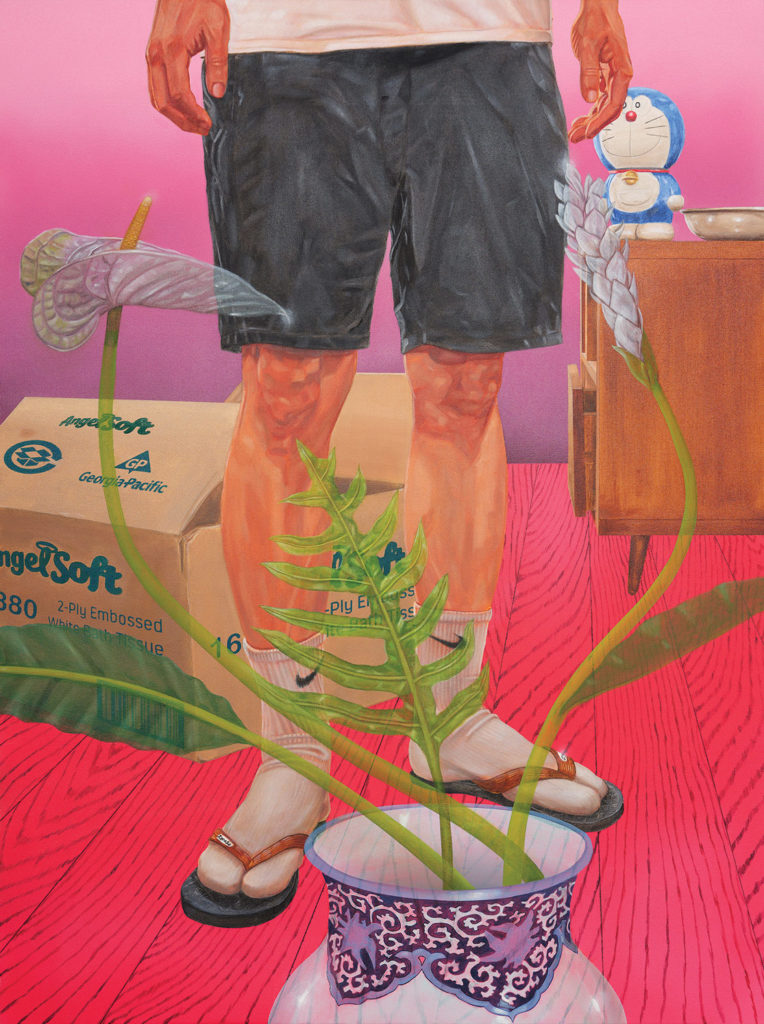
Intersections of a Wandering Mind, 2022, oil and acrylic on canvas, 48" x 36"
"I consider this body of work as a conversation between the past and the present within a liminally psychological space."

Working on an untitled painting in progress
What are you currently working on and where did the inspiration for it come from?
I am currently working towards an exhibition at UTA Artspace in Los Angeles. I’ll have roughly 5 to 6 pieces on display for this show along with a sculptural element. I have long since been curious about my family history, and what form that takes as one grows up in a place like Hawaiʻi. I draw upon a mixture of cultural nuances, iconography, and imagery inspired by my upbringing in Honolulu, Hawaiʻi, and more recently my migration to Los Angeles.

Gatekeepers, 2022, oil and acrylic on canvas, 60" x 78"
For this body of work, I started to think about specificity of place, and use subtle references to cultural nuances. The work oscillates between reality and the imagined, in which subtle layers of multicultural iconography are uniquely juxtaposed to confront the viewer with an amalgamation specific to personal and generational history. The idea stems from the fact that ancestors who have migrated have had to assimilate, and the form that this assimilation takes is a unique story to each community. I chose to dissect mine. I consider this body of work as a conversation between the past and the present within a liminally psychological space.
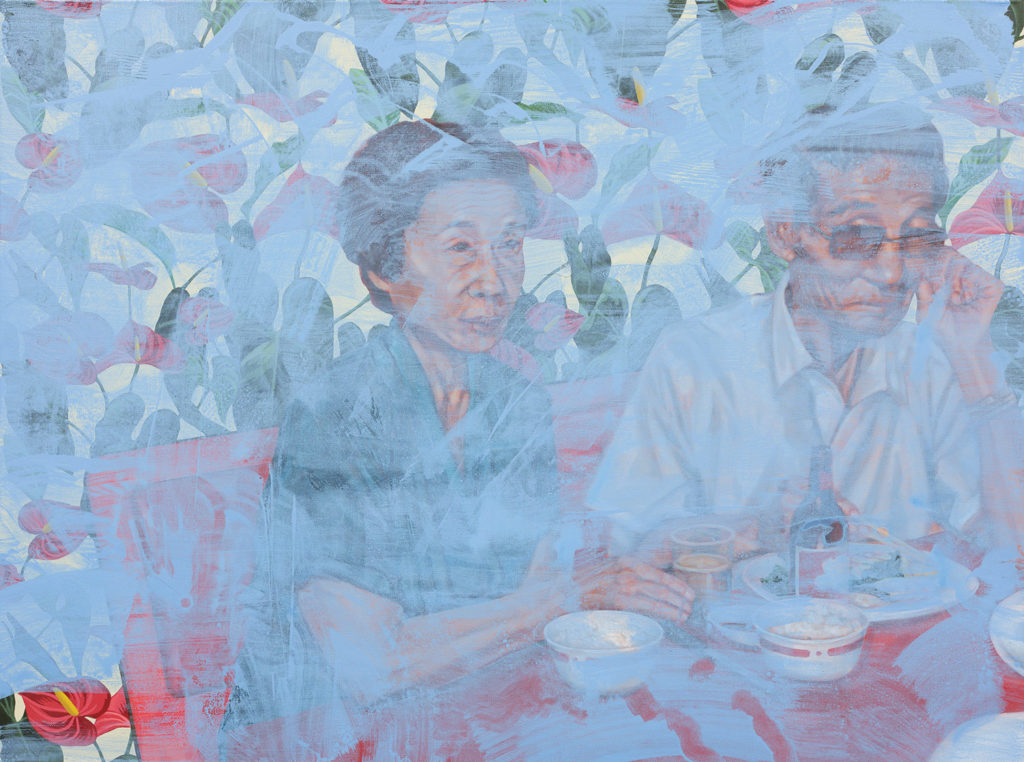
Remember to Forget, 2021, oil and acrylic on canvas, 30" x 40"
Innovation does not only happen in the field of technology — it occurs everyday in a creative practice. What do you do for inspiration?
I am always in search of different ways I can tell stories of my family history, cultural hybridity, and describe the specificity of the environment I grew up in. I would sift through old family photographs, or take inspiration from various textiles that are uniquely related to my upbringing. Through hiking and exploring the natural environment, I am also able to draw inspiration from flora, and fauna of various local ecosystems.
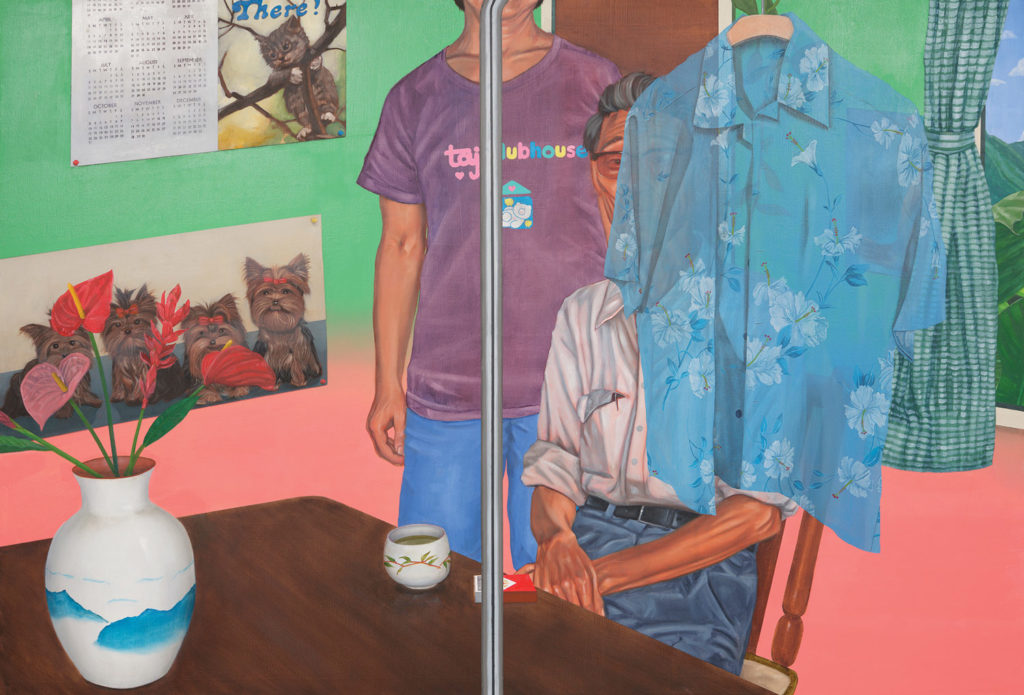
Home is Where the Heart is, 2021, oil and acrylic on canvas, 48.5" x 68.5"
Describe your practice and process. Where do ideas start for you? In the studio or being in the world?
My practice involves constant mediation between family history, generational trauma, and defining what “home” is. I am regularly taking notes on observations based on self-reflection. My process generally consists of looking through old family photographs, while embedding specific iconography that’s relevant to the culture of Hawai’i, and more recently to Los Angeles. I am constantly negotiating the amount of visibility that many of the tableaus in my paintings consist of, and recreate ways to construct symbols and signals that obstruct while allowing viewership. The visual duality of access and denial are symbolic in nature of the ways that I cope with my lack of ancestral heritage connected to place.

"Intersections of a Wandering Mind" painting in progress shot.
How do you make your work, does it start with a sketch?
My work normally starts off as a very generalized sketch, mocked up either digitally or on paper. I then continue exploring various ways that the work can be puzzled through, continually adding and subtracting from the composition. I’ve been interested in themes of invisibility, in betweenness, and what I’ve landed on was to create motifs that involved interjections through transparencies. It’s crucial that when I paint there’s a sense of delicacy to the transparencies, which imbues a sense of vulnerability, while in the comfort of being “home.”
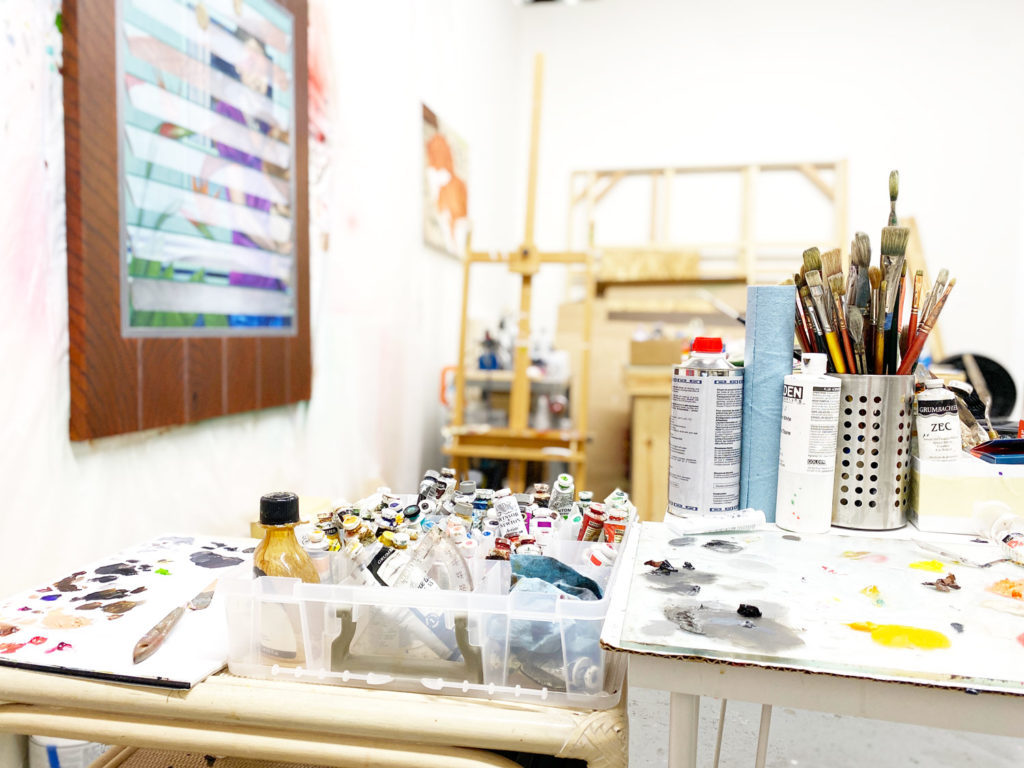
Detail of studio

"Gatekeepers" painting in progress shot.
Do you have your own studio ritual? What does that look like for you?
I wish I had a ritual or a more scheduled mode of working. I frequently work at pretty irregular hours late in the evening. Ever since college I’ve been more of a nocturnal worker since I enjoy the quiet and tranquility of the night. I also do have a job with long hours so I am always juggling my time between my work and my art practice. Whenever I am at my studio I’d put on a podcast, or a show that I’ve watched a number of times just to have some noise while I work.

In progress shot of "Home is Where the Heart is"
Who are your biggest influences?
In all honesty it's very difficult to narrow down influences, because I think this constantly changes over time. One of my biggest influences is my painting instructor from college, who taught me from basics to advanced techniques of oil painting. Through this I was able to have a strong foundation to my painting practice.
Currently I am looking at contemporary artists such as Jennifer Packer, Jordan Casteel, and Njdeka Akunyili Crosby.

Shelf Life, 2021, oil and acrylic on canvas, 36" x 48"
Are there books or films that are an important source of inspiration?
Most films and books inspire me on a subconscious level, as I’m not particularly appropriating films and books as a part of my practice. At the moment films such as “Blue Hawaiʻi”, or “From Here to Eternity” stick out to me specifically their use of Hawaiʻi primarily as a backdrop of paradise or commodified culture for the sake of tourism. The Aloha shirt has been an interest to me because of its popularity through films like these in the 1950-60’s helped solidify its place as a staple garment in Hawaiʻi. The exact origin is unknown however what is known is that Aloha shirts were originally made by locals in Hawaiʻi who made shirts out of kimono fabrics in the 1920’s or 30’s. These locally adapted products have been a constant source of inspiration for me as a way to share my cross-cultural history.
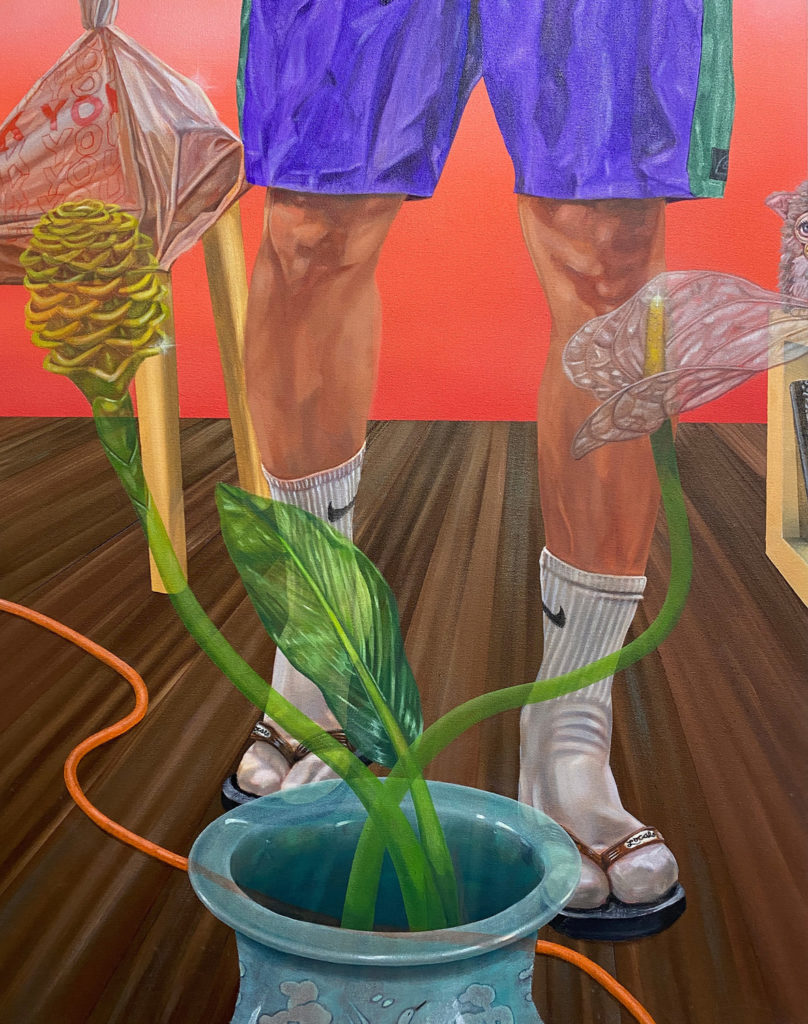
Remnants of Nostalgia, 2022, oil and acrylic on canvas, 30" x 24"
How will Innovate Grant contribute to your practice?
The Innovate Grant will not only provide a platform for my work to be seen, but also help me with financial energy to continue my practice contributing working towards a new body of work.
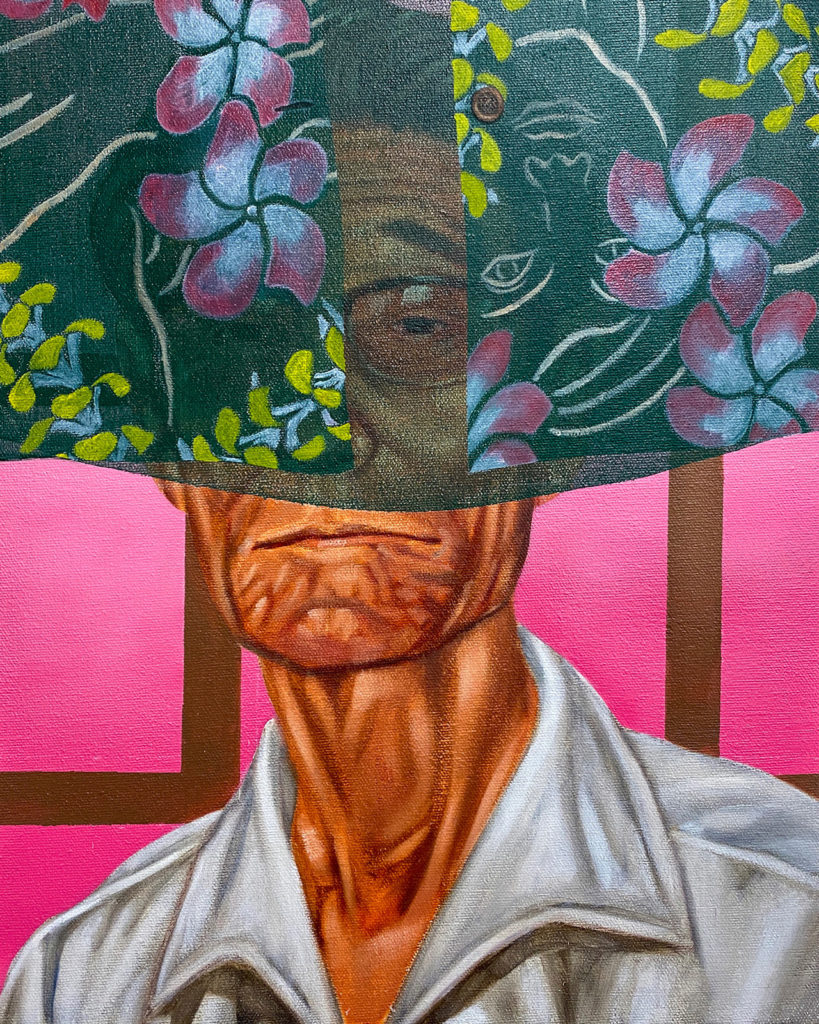
Transient Veil, 2022, oil and acrylic on canvas, 20" x 16"
What’s the best piece of advice you’ve been given?
One of the conversations that I have really held close was with one of my college instructors who told me to trust the process. Making artwork takes an enormous amount of intimate time with your work, and trusting that process to fully develop the work is critical.
What is the best advice you would give to other artists?
Make work that is honest and resonates with you. This will keep and continue the motivational energy to have longevity with your practice.
Stay up to date with Shingo Yamazaki
Instagram @shinnyzak
shinyamazaki.com